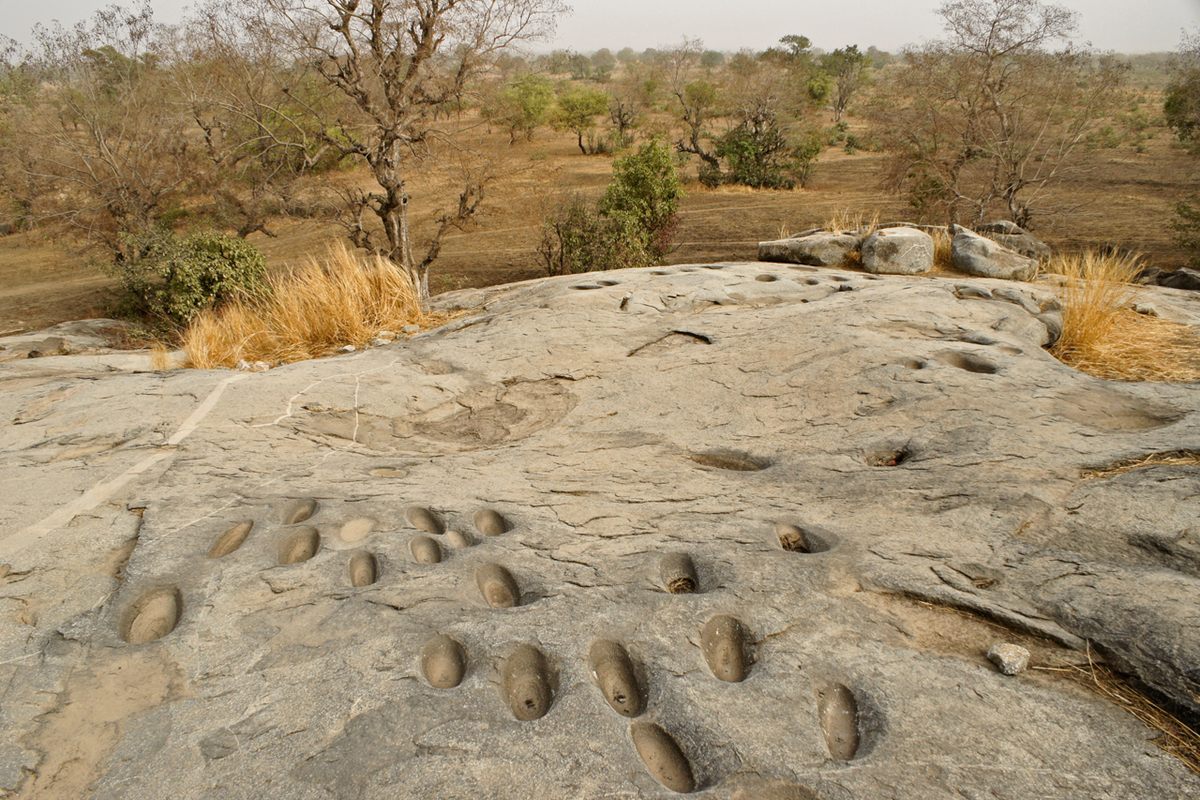From Tamale, Ghana’s third-largest city, it has taken almost four hours to get here, on a single-lane highway following the White Volta River. Usually it’s under three hours, past shea trees on the sparse, dry landscape, but this time political rallies and visiting dignitaries—including the country’s president—have meant detours and delays.
I’ve made this journey, as I have before, to visit Pikworo. As far as the eye can see, it’s all grass, clusters of stunted trees, rocks, and even more rocks—some brown, some gray like a London sky, pocked with holes and crevices.
The name translates to “rocky area” in Kaseena, the local language. The rocks and boulders are strewn across a sweeping green meadow, the sight of which, after so much brown, is startling. Though it is the rainy season, the morning drizzle is gone and the clouds have given way to sunshine. Nearby, in Nania, a tiny village two miles from Paga, a town on Ghana’s northern border with Burkina Faso, people go about their business—selling, cooking, building a life on the roadside, but this stunningly beautiful square mile of rocks and grass is eerily quiet, save for the chirping of birds.
A small group of visitors and I, led by a guide I’ve encountered on previous trips here, Aaron Azumah, 35, stroll around some of the boulders. Azumah leads us to a couple that have large oval holes in them, like giant thumbprints pressed into the rock. One rather large, rectangular one is filled with water from an underground spring. There’s a sign: “Eating and Drinking Place for Slaves.” Some of the holes, we’re told, were dug by captives, who were forced to dig into the rock with their fingers to create “plates” where a local dish called tuo zafi, made from maize or millet, maybe with cassava, was served. They were eating from the rocks on which they were forced to stand.

Photo above: Local stories say that these depressions were carved into rock by slaves at Pikworo for serving food. MICHELE BURGESS / ALAMY
All 2019, Ghana has been rolling out the red carpet to celebrities, political figures, and thousands of other members of the African diaspora for what it has termed the “Year of Return,” a 12-month commemoration of 400 years since ships first began to leave its shores, bound for the Americas, heavy with human cargo.
Most of those who have come have spent much of their time touring cities and visiting the castles built on the Atlantic Ocean. These were the last places that their ancestors saw of their homeland. Fewer visitors, however, continue on a reverse journey into the Ghanaian interior, to places such as Pikworo, where the insidious trade took root, where thousands died in the earliest stages of a journey that would, at every stage, claim thousands more lives: the trek to the coast, the slave markets, the Middle Passage, and then more markets, before they arrived at the plantations where those who survived were likely to spend the rest of their lives.
To read the full article please click here

Comments